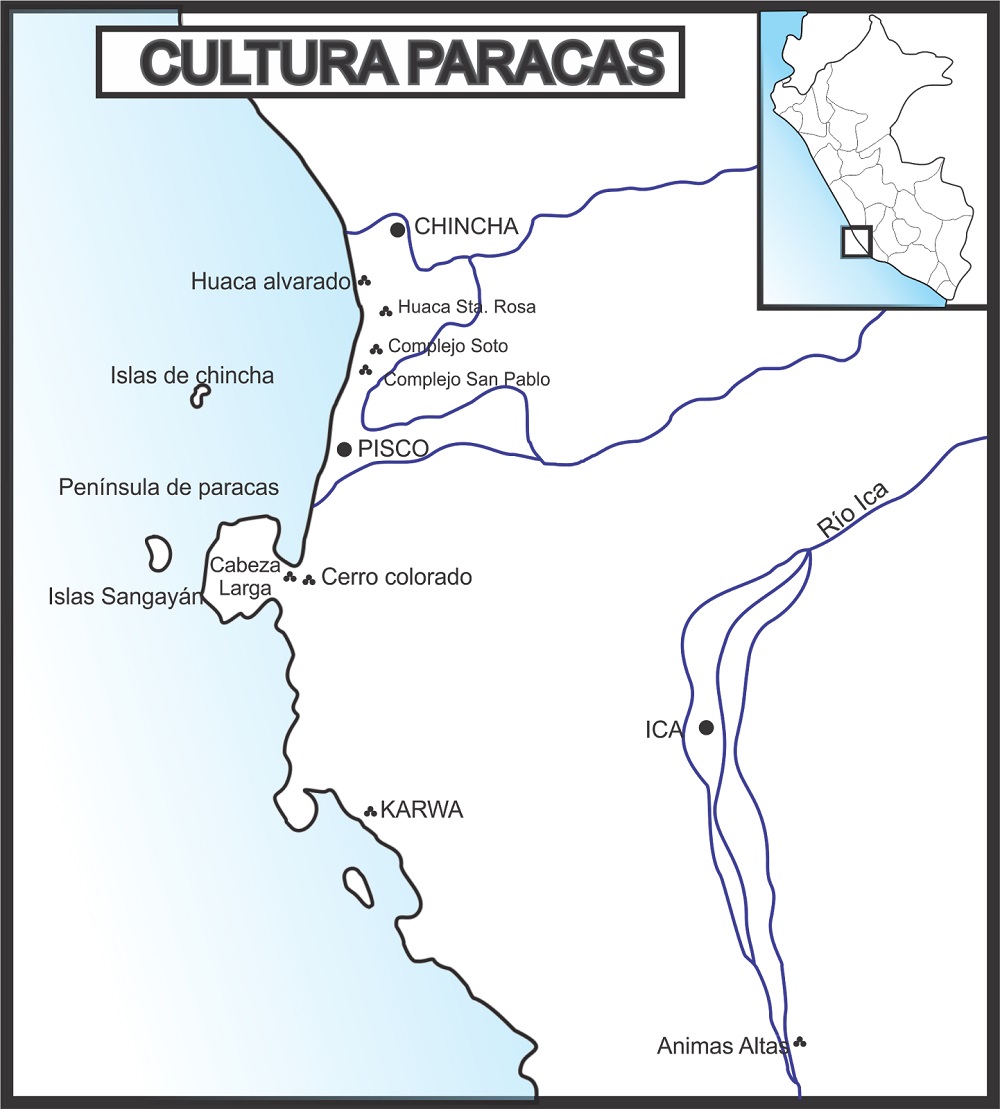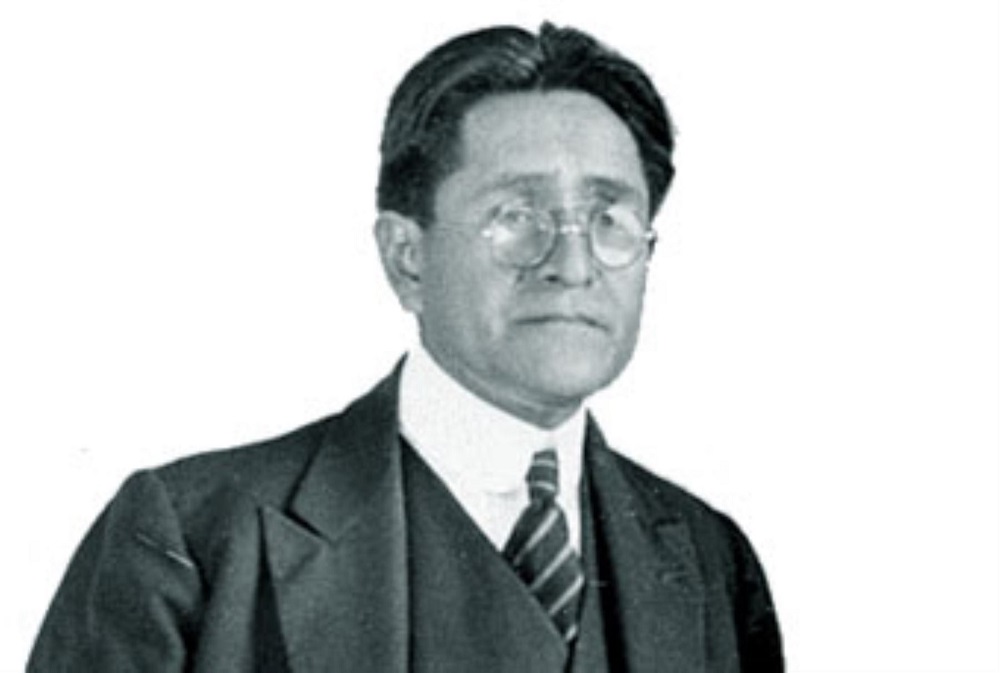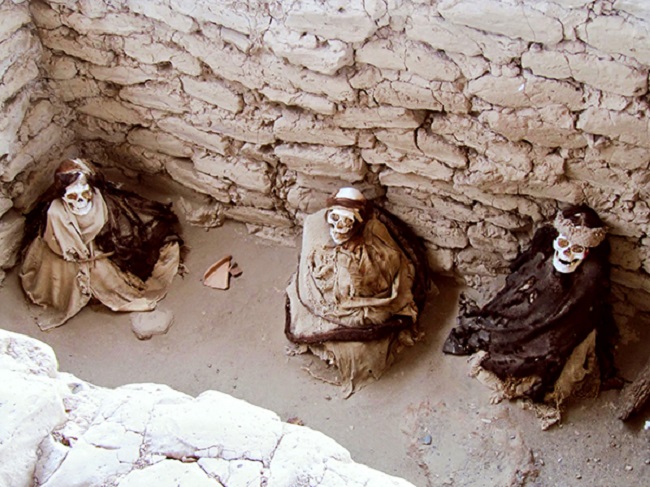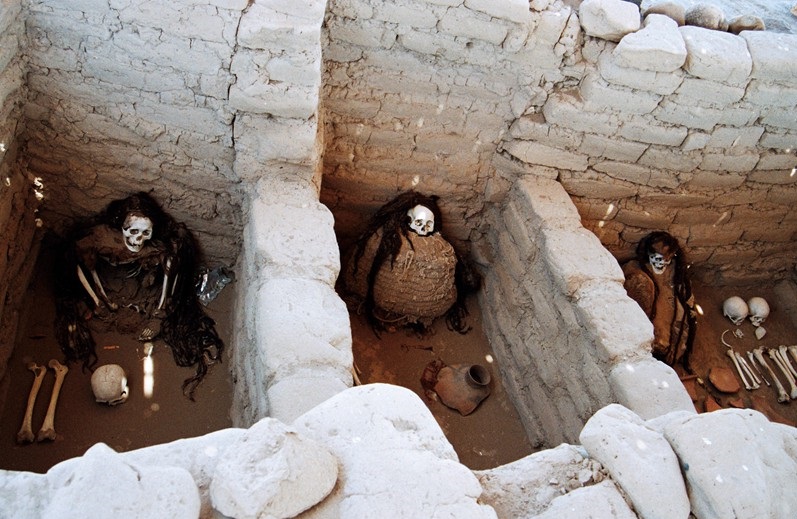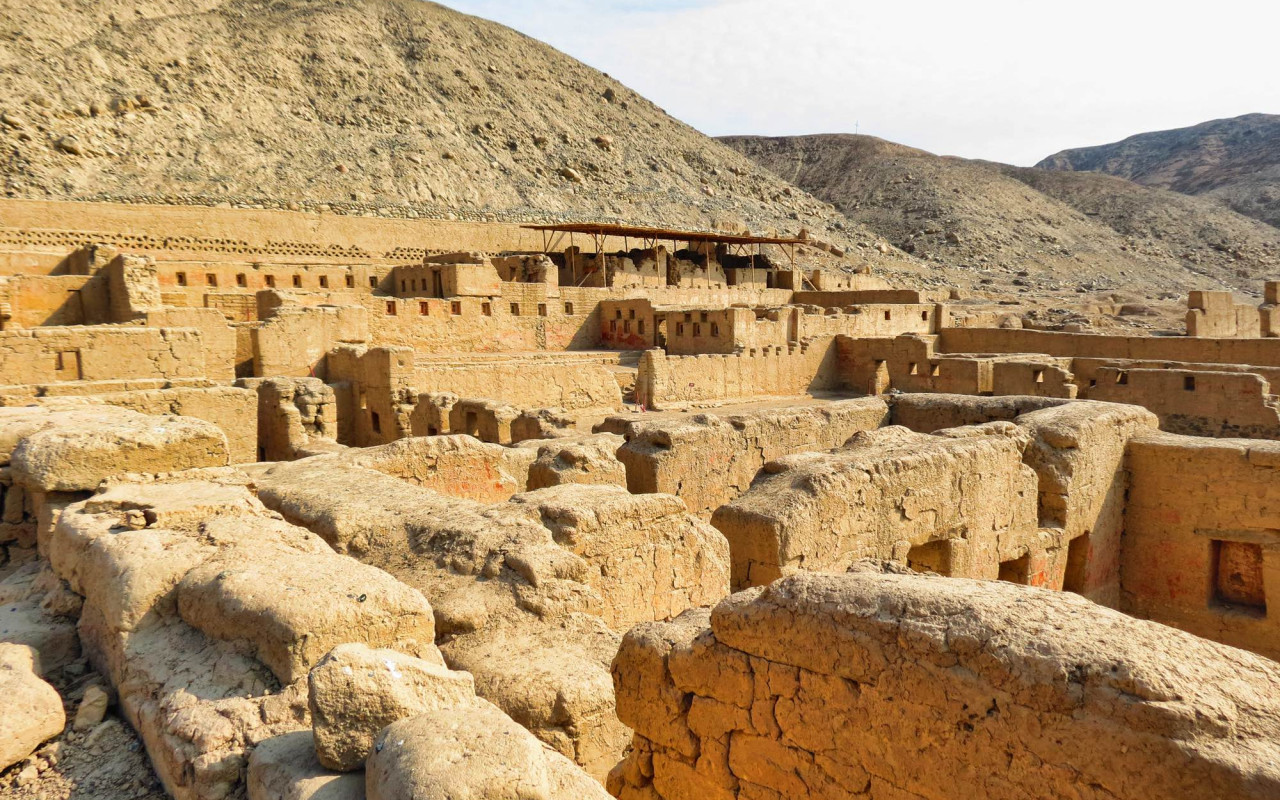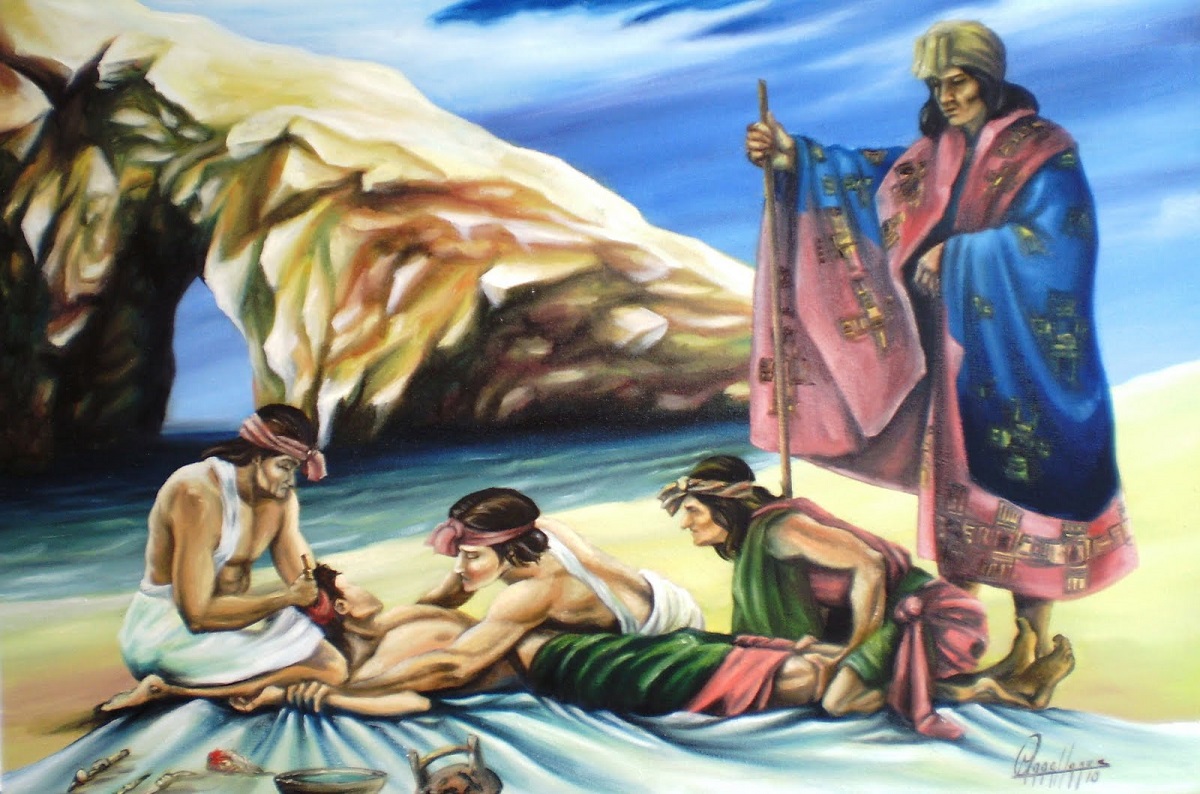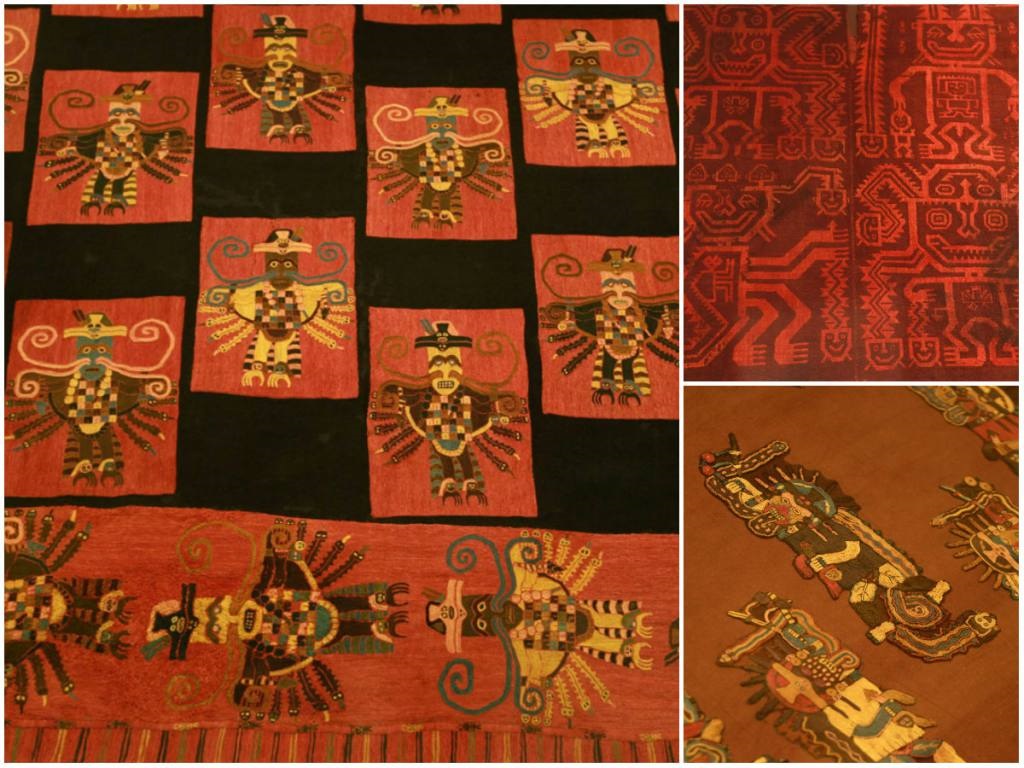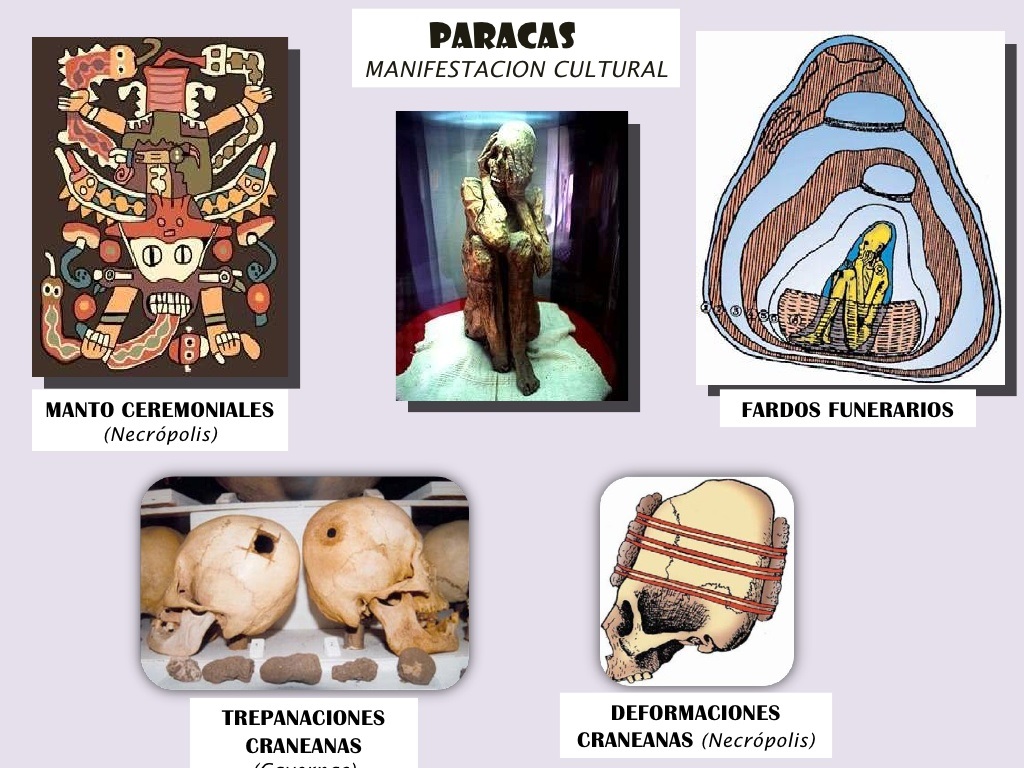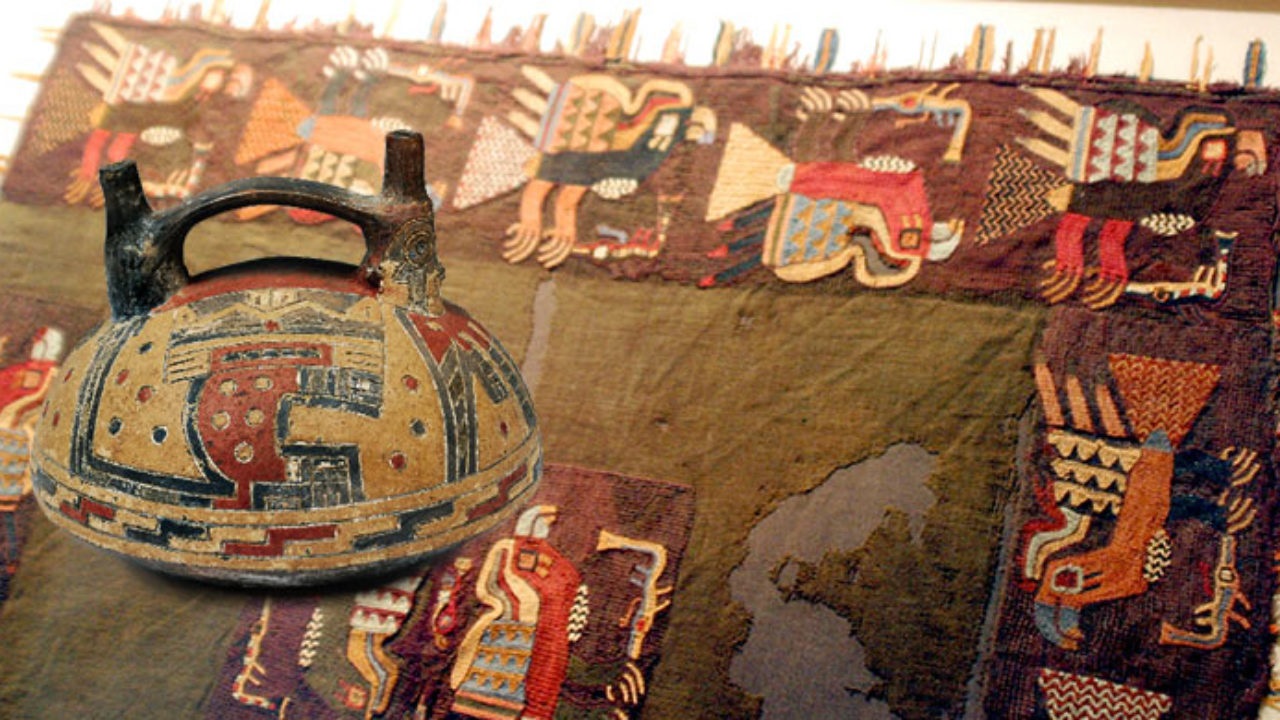If you want to know some important aspect of the Paracas Culture Medicine, go to this interesting post. The Paracas practiced a crude form of surgery, but they were also known for other relevant things, here you will find out about it. Do not miss it!
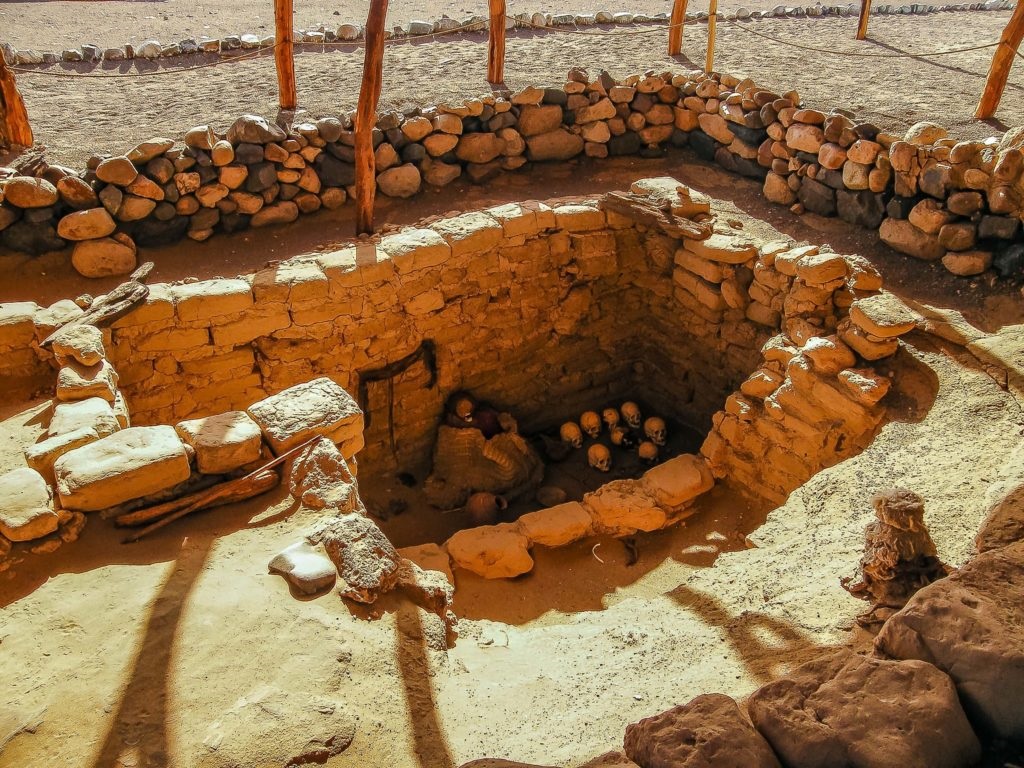
Medicine of the Paracas culture
This ethnic group was an important culture of ancient Peru, from the period called Upper Formative or Early Horizon, which arose in the Paracas peninsula, Pisco province, Ica region, between 700 BC. C. and 200 AD
It is part of the contemporary Chavín culture that emerged in northern Peru. Thanks to the investigations of the researcher Julio Tello, he called it "Paracas-Necropolis". It is of origin of another culture, identified as the Topará culture, whose center was located further north, in the Chincha Valley.
The Paracas practiced high-quality textiles, wool and cotton, as well as decorated pottery and elaborate basketry. They also performed cranial drilling, the goals of which are still debated.
The Paracas culture is the ancestor of the Nazca culture with which it has a clear cultural affinity; in fact, for many scholars, the final phase of Paracas is in fact the beginning of the Nazca culture.
Geographic location
The Paracas progressed mainly between the Ica and Pisco rivers and in the Paracas Peninsula (Ica region). During its greatest period of expansion, it spread north to Chincha and south to Yauca in the Arequipa region.
For many, the most relevant site of the Paracas may be located in Tajahuana, in the Ica Valley, in the Ocucaje sector. It was a fortified city that was built on top of an easily defensible cliff.
Etymology
Paracas is a Quechua word meaning rain of sand (by, rain and acoustics, sand) and refers to the impact caused by hurricane-force winds that regularly hit the region, as well as sand and bear guano from nearby islands. and cover the surface with it as a whitish layer.
This atmospheric phenomenon gave the Paracas Peninsula and, in a broader sense, the pre-Inca culture discovered in this region and therefore bears its name.
Paracas deposits
- Chincha: Wineries, Lurin, Chincha.
- Pisco: Cerro Colorado, Disco Verde, Cabeza Larga, Chongos, Tambo Colorado.
- Ica: Tecojate, Huamaní, Ocucaje, Callango (Animas Altas and Ánimas Bajas), Chiqueritos, Ullujaya, Tomaluz.
- Feel: Mollaque, Chichictara.
- Nazca: Soysongo, Atarco, Trancas, Cahuachi.
Discovery
The Paracas culture was found in July 1925 by Tello on the shores of the Bay of Paracas and south of Pisco. In August of that year Tello established a research site on the site with the help of his apprentice Toribio Mejía Xesspe.
Tello found the first cemetery in Paracas in the red porphyry hills of Cerro Colorado. He found a total of 39 well-formed tombs, which he called "caves," containing tomb bundles wrapped in thin layers and surrounded by pottery, hunting tools, animal skins, and food.
In 1927 Tello and Mejía Xesspe discovered another cemetery in Wari Kayan, very close to Cerro Colorado, which they called the Paracas Necropolis. There he found 429 mummified bodies, each wrapped in different layers, some of which were very beautiful. . It is the famous Paracas shelters that are preserved today in the MNAAHP.3
In addition to these two cemeteries, Tello identified a third in the Paracas peninsula, which he called Arena Blanca or Cabeza Larga, the reason for placing that name is due to the presence of elongated and deformed skulls. There he found not only looted tombs, but also the remains of underground houses.
Division according to Tello
Based on what he found out, how the Paracas buried their dead and argued that this culture encompassed two well-defined phases. He called the first "Paracas-Caverns"; because they buried their dead inside tombs dug vertically into the ground, which widen before reaching the ground, giving it an inverted cup shape (although they are actually wells rather than "caves").
He called the second "Paracas-Necropolis"; because they buried the dead in more sophisticated quadrangular cemeteries, which claim to be "cities of the dead" or necropolises.
This division of the Paracas was booming for many decades, due to the prestige of Tello, called the "father of Peruvian archaeology", until other archaeologists showed that the so-called "Paracas-Necropolis" actually belong to another cultural tradition: Culture will bump.
Paracas Caverns (700 BC – 200 BC)
The phase called the Caverns of Paracas is from 700 years before Christ. The main population of the Paracas culture at that time developed in Tajahuana on the banks of the Ica River in the Ocucaje sector.
The name comes from the way the Paracas buried their dead in fetal form. This is confirmed by the results of the funerary bundles found in Cerro Colorado.
The tombs found were excavated underground in the rocks, with a shape that looks like an "inverted cup" or a high-necked bottle, at the bottom of which the funerary bundles were placed in about 6 meters in diameter.
They were common graves, although it is not known if the burials belonged to the same family, the bodies are mummified due to climatic and terrain conditions. Some of the corpses show trepanations and deformities of the skull.
Paracas Necropolis (200 BC – 200 AD)
The phase called Paracas Necropolis owes its name to the fact that the rectangular cemeteries found in Wari Kayan were separated into several compartments or underground chambers, which Tello appeared as the "City of the Dead" (Necropolis).
Each great chamber would have supposedly belonged to a particular family or clan that had buried their ancestors for many generations.
Tello's theories have been debated by other archaeologists. In the first place, Wari Kayan does not seem to have been a necropolis, but rather a large populated center, in some of the buildings from which more than 400 bundles have been deposited, a fact that to date has no satisfactory explanation.
It could be a place that could be considered a holy place, due to the red coloration of its hills and its proximity to the sea, which would return it to death and regeneration. And secondly, the cultural manifestations of this site do not belong to the Paracas itself, but to another different cultural tradition, which was called Topará and which developed in the valleys of Cañete, Topará, Chincha and Pisco, up to the peninsula of Paracas as the southern limit.
In other words, Wari Kayan was precisely on the border between the two cultures. It is likely that the Topará culture brutally imposed itself on the region after a war of conquest. The presence of weapons in many funerary packages, as well as the massive presence of broken and trepanned skulls, would be signs of a very violent time.
In the investigation it was learned that the mummy is wrapped in many layers of cloth, some of which are of very good quality. These fabrics, precisely, are the ones that made Paracas famous, since its best examples are very splendid. They are known throughout the world as Paracas Mantos.
Architecture
Both in the Paracas peninsula and in other Paracas sites, no trace of monumental works has been found, with the exception of the lower valley of Ica, where two important sites are located: Ánimas Altas and Ánimas. Low.
Ánimas Altas has an area of 100 hectares and is defended by a high wall made of layers of straw and earth covered with adobes.
It consists of thirteen elevated structures with a similar orientation and architectural model. Some of its walls have decorations made with incised lines while the clay was still wet. They represent deified felines.
In the vicinity of Ánimas Altas is Ánimas Bajas, about 60 hectares, made up of seven rectangular mounds built with artisanal adobe, in the shape of balls or grains of corn.
If the Paracas, without a doubt, followed a rigorous and prolonged ceremonial. The corpse was mummified through a very elaborate technique, the details of which are unknown; but more often than not, they resorted to natural mummification, released into the environment.
The mummy, wrapped in its shroud and in a fetal position, was placed in a wicker basket with a series of objects, indicating the Paracas' concept of life after death. Clothes, slings, cloths, as well as pots with peanut grains, ears of corn, etc. were found.
The whole was carefully covered by a number, not always the same, of blankets or fabrics of different quality; the package thus formed is called a funerary package. The mantle closest to the body of the mummy is usually the thinnest, embroidered with figures that symbolically represent the world of Paracas mythology.
The remaining layers are of inferior quality. Some funerary packages are wrapped in as many as ten or eleven wrappers, and undoubtedly belong to members of the ruling classes.
Textiles
The tombs found in Cerro Colorado ("Caverns of Paracas") are the main source from which samples of the textile art of Paracas have been obtained. They are made of cotton (white and dark brown) and camelid wool. In addition, human hair and plant fibers were used.
The threads are dyed with substances of different colors. They also dyed the fabrics after they were made. Another method of decoration was embroidery, although this was done more extensively and with more splendid results in Paracas-Necropolis.
As for the decorative figures, they represent mythical beings and symbolic motifs, generally with rigid geometric shapes, but all made with great artistic sense.
In particular, one figure is constantly repeated: the so-called Hidden Being, represented on the whole body or only on his head. He has wild eyes, a feline mouth, and a body covered in symbols that sometimes stand out and come to life.
But without a doubt, the most splendid coats or fabrics correspond to Paracas-Necropolis, although in truth they were made by the Topará culture.
Ceramics
Paracas pottery has a distinct and conspicuous style, which is repeated outside the Paracas peninsula, in various areas between the Chincha valleys to the north and the Río Grande (Palpa) valley to the south.
For the Ica Valley, a long ceramic chain has been established, which begins in pre-Paracas times and ends at the beginning of the Nazca culture, known as the Ocucaje style, which consists of 10 phases. It should be noted that this ceramic sequence is the most complete of the Andean Formative.
The ceramics of this culture have very different styles: vessels, cups, plates, as well as globular bottles and containers with two vertical spouts joined by a bridge neck. Some are sculptural in shape, showing human bodies similar to the knives of the Chancay culture.
As for the decorative technique, it was like this: the figures were first delimited by incised angular lines, drawn while the clay was still wet. After firing the clay, staining was carried out, for which resinous paint was used.
The main colors used were black, red, green, yellow and orange. The figures represented show closeness to the art of Chavín, in particular the representation of a supernatural being with feline, bird and human features, which has been called the Flying Feline.
Iconography
The iconography of Paracas evokes cosmological and mythological themes and at the same time refers to historical stories such as the conquest and foundation of human settlements, events marked by wars and ceremonies, in which human sacrifice was recurrent.
Cranial Trepanations
There is evidence that they performed surgeries, called skull trepanations. For this practice, the Paracas "doctor" used obsidian blades, tumis or crescent-shaped blades (made of a mixture of gold and silver), scalpels, and tweezers.
They also used cotton, gauze and bandages. The skull was pierced with the obsidian blade and the damaged bone was scraped or hollowed out with the knife, making a circular turn that gave the opening a circular shape.
Once the respective treatment was done, the opening was sealed with gold or matte plates (pumpkin). This allowed the operation to heal without any problems.
The reasons behind this practice have been much discussed; It is believed that they were made for the purpose of healing fractures of fallen bone walls, for the relief of headaches, and for the treatment of mental illness by magical means (perhaps it was believed that when the skull was opened, spirits would come out). malignant).
Many skulls with signs of trepanation indicate that people have survived this practice, due to the presence of bone calluses in the operated area, the same ones that only form over the years in a living person. No doubt no one imagined what the Paracas could do.
Even more of the Paracas Culture
Configured as the predecessor of the Nazcas, the Paracas culture is recognized for its textile art, its pottery, its trepanation of skulls and its mummies. Discovered in 1925 by archaeologist Julio Tello, it was developed in the Paracas region of Peru.
Their predominance extended north to the Cañete Valley and south to Arequipa, encompassing Chincha, Pisco, Ica, Palpa and Río Grande. The towns of Peña Ajahuana, Ánimas Altas and Huaca Rosa are vestiges of this civilization.
Generalities of the Paracas culture
They had a great knowledge of hydrological techniques to promote agriculture, through irrigation canals. Another procedure used for planting was the wachaque or sunken fields, which consisted of digging holes until reaching the moist soil necessary for cultivation.
In this way, they stood out in the cultivation of cotton, beans and corn. Likewise, due to their location near the coast, they developed navigation and, with boats called caballitos de totora, took advantage of the resources offered by the sea.
Under a theocratic system of government, this ethnic group had a hierarchical social division into priests, warrior nobility, and common people. Where the cult of a god of the eyes called Kon predominated, considered the creator of the universe.
Brief history of the Paracas culture
Historically, they evolved between 700 B.C. C. and 200 AD, and according to the Peruvian archaeologist Julio Tello, this culture has two consecutive phases:
Caverns (700-500 BC).
Being the oldest period of this ethnic group, they were characterized as peasants, warriors, religious and happy. They built houses in the lower parts of the mountains and a fortress on a stone plateau, known as Tajahuana, which may have been the capital of this civilization.
Among the findings, ceramics with a strong Chavín influence and musical instruments such as drums and trumpets stand out. In addition, the tombs carved in the shape of an inverted cup with buried mummies, perfectly preserved and wrapped in cloth, stand out.
Necropolis (500 BC – 200 AD).
According to some recent studies have shown that this stage belongs to the Topará culture. Its name is due to the discovery of a large rectangular graveyard in Wari Kayan, similar to a city of the dead.
Here, the elite natives were buried, wrapped in intricately embroidered fabrics and decorated with figures of felines or serpents, known as paracas funerary packages. The walls of the tombs were made of small stones joined with mud and the roofs of huarango wood.
Medicine and surgery in the Paracas culture
Considered experts in surgical interventions for the treatment of fractures, infections or tumors, they have notably performed cranial trepanation. To do this, they used coca leaves and a malted corn drink as anesthesia, against pain and infection.
In cranial trepanations, the "surgeon" of the tribe used obsidian burs, knives, scalpels, tweezers, cotton and bandages. In the procedure, the skull was drilled with the bur, scraping away the damaged bone until a circular opening was made.
The hole was then filled with gold plates, allowing the operation to heal without any problems. The numerous corpses found with skull trepanations indicate that people survived the practice.
It is believed that this practice was done to heal fractures or sagging of the bone walls that occurred in battle. Also to relieve migraines or to treat mental illnesses through magical procedures, so that when the skull is opened, the spirits that caused the damage come out.
Manifestations of the Paracas culture
Among the most striking manifestations of the Paracas culture are:
Textile
With evident notoriety in textile art, they make high-end materials such as alpacas, vicuña wool and multicolored feathers. Whether they design with geometric patterns, animal or anthropomorphic figures and a beautiful color scheme. Although the cloak is in fact the most notable composition, made of a single rectangular piece, they were worn on the head as a mantilla or as funerary bundles. Almost all textiles in Paracas were defined by two styles:
Linear, on a base fabric, they used four colors woven in a straight line and trim surrounded by embroidered bands. Blocks of colors, which have the characteristics of small curved and repeated pictorial motifs in different combinations with highlighted finishes.
Ceramics
As for ceramic art, it is distinguished by complex polychrome decorations and religious representations. Something that changed in the necropolis phase of Paracas, where the predominant character was monochrome, determined by the use of cream or black colors. The shapes were generally oval with two short points and connected by a bridge handle.
Arts and crafts
In addition to ceramics, they possessed exceptional crafts, such as stone sticks, obsidian knives, gourd shell bottles, rattles, shell or bone necklaces, and hammered gold ornaments.
We can conclude that the Paracas culture left contributions both in medicine and in textiles, which can be demonstrated today.
If you found this article interesting, we invite you to enjoy these others:
